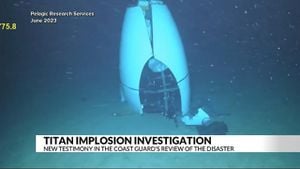Can farming fish in the sea truly nourish the world? A critical exploration into this question reveals that marine aquaculture, particularly in offshore environments, might not be the silver bullet that some proponents claim it to be. While the concept of 'farming the seas' has gained traction as a solution to the limits of terrestrial food production, a nuanced examination reveals that this narrative may overstate marine aquaculture's potential benefits.
At the heart of the debate is the idea of 'blue growth'—a policy discourse that promotes the expansion of the ocean economy, including marine aquaculture, as a new frontier for sustainable development. Proponents argue that marine aquaculture can provide a crucial source of protein for the growing global population, support malnourished populations, and align with conservation goals. However, a detailed critique reveals significant gaps in this optimistic outlook, particularly concerning the economic, environmental, and social dimensions of offshore finfish farming.
The idea of 'farming the seas' isn't new. For decades, futurologists and aquaculture advocates have championed it as a solution to the perceived constraints of terrestrial food production. Recent literature, however, introduces a 'new wave' of narratives that rebrand marine finfish farming from an ecologically damaging activity to one compatible with sustainable resource use, conservation, and human nutrition goals. These narratives leverage geospatial modelling to suggest that vast areas of the ocean are suitable for marine aquaculture, thus portraying it as an inevitable and necessary development.
But how accurate are these claims? A critical examination reveals several flaws. For instance, the economics of operating in offshore environments require the farming of high-market-value, carnivorous fish species. These are not accessible to low-income consumers and do not address food insecurity effectively. Moreover, the environmental impacts of such operations are often understated. The need for significant technological advancements and high operational costs further complicate the picture.
The methods used to arrive at these optimistic projections often involve complex geospatial analyses and modelling exercises. These methods incorporate various parameters such as the physiological requirements of fish species, marine hydrography, habitat suitability, and competing uses of ocean space. While these studies claim to reveal vast untapped potential for marine aquaculture, they often assume no economic, environmental, or social constraints to production—a significant oversight.
One striking example is a study on the potential for cobia farming in the Caribbean. Initial projections suggested a production capacity of 43.1 million tonnes per year. However, if the price of cobia were to fall by just 13%, this projection would drop to below 1.5 million tonnes per year—a stark reminder of the economic realities that can undermine such grand visions.
Moreover, the focus on high-value species such as salmon underscores the economic and social limitations of marine aquaculture. Despite half a century of intensive research and development, salmon farming remains a relatively high-cost endeavor, making it inaccessible to low-income populations. Planned investments in offshore finfish farming projects in China highlight similar trends, with a focus on luxury species like salmon, yellow croaker, and tuna. These projects, if realized, would do little to address global food and nutrition security.
Critics argue that the alignment of marine aquaculture narratives with the 'blue growth' agenda serves to commodify the oceans, facilitating the creation of private property regimes that could exclude small-scale fishers. This exclusion poses significant risks to coastal communities that rely on small-scale fisheries for their livelihoods and food security.
For example, small-scale fisheries contribute significantly to food and nutrition security in many developing countries. They are resilient to fishing pressure and play a crucial role in local economies. Yet, the push for marine aquaculture overlooks these contributions, focusing instead on the expansion of offshore finfish farming—a move that could potentially displace small-scale fishers and undermine their valuable contributions.
The broader implications of this critique are profound. While marine aquaculture has the potential to complement traditional capture fisheries, it should not be viewed as a panacea. Policies and investments should prioritize sustainable practices that enhance food security and equity. Freshwater aquaculture, for instance, offers a more viable and equitable solution. It is less capital-intensive, more accessible to low-income consumers, and has a proven track record in supporting food security in numerous countries.
Moreover, the environmental sustainability of marine aquaculture remains contentious. While proponents argue that offshore aquaculture can reduce point-source pollution and improve resource efficiency, critics point to the ecological impacts of farming carnivorous species and the challenges of managing waste and preventing disease outbreaks in open-ocean environments.
To address these concerns, future research should focus on improving the sustainability and efficiency of both marine and freshwater aquaculture. Advances in feed formulation, waste management, and biosecurity measures are essential. For instance, closed intensive land-based recirculating aquaculture systems (RAS) offer a promising alternative to traditional marine cages. RAS can capture and utilize 100% of nutrient wastes, providing high levels of biosecurity and reducing environmental impacts. However, these systems are currently limited to high-value species due to their high operational costs.
Ultimately, a balanced and inclusive approach is needed to address the global challenge of food security. This includes recognizing the value of small-scale fisheries, investing in sustainable aquaculture practices, and integrating innovative technologies that enhance productivity while minimizing environmental impacts. By critically examining the narratives around marine aquaculture and focusing on equitable and sustainable solutions, we can better navigate the complexities of feeding the growing global population.
In conclusion, while marine aquaculture holds promise, it is not a one-size-fits-all solution. The future of global food security lies in a diversified approach that includes sustainable marine and freshwater aquaculture, recognizing the vital role of small-scale fisheries, and addressing the social, economic, and environmental challenges that accompany these endeavors. As we move forward, it is crucial to ensure that policies and investments are directed towards enhancing food security and equity for all, rather than merely serving the interests of a few.



